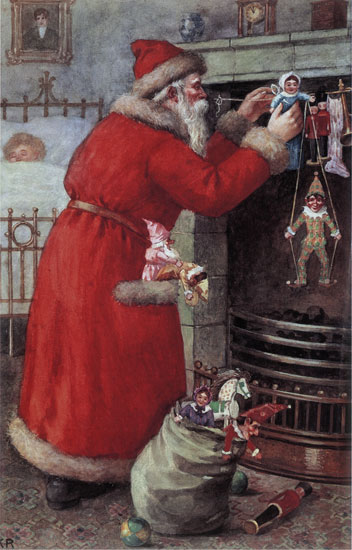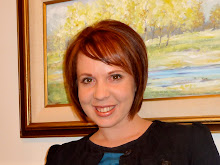
On Christmas Eve, children leave their shoes by the fireplace to be filled with gifts from Pere Noel. In the morning they also find that sweets, fruit, nuts and small toys have been hung on the tree.
In cathedral squares, the story of Christ's birth is re-enacted by both players and puppets.
Nearly every French home at Christmastime displays a Nativity scene or crèche, which serves as the focus for the Christmas celebration. The crèche is often peopled with little clay figures called santons or "little saints." In addition to the usual Holy Family, shepherds, and Magi, the craftsmen also produce figures in the form of local dignitaries and characters. The craftsmanship involved in creating the gaily colored santons is quite astounding and the molds have been passed from generation to generation since the seventeenth century. Throughout December the figures are sold at annual Christmas fairs in Marseille and Aix.
The Christmas tree has never been particularly popular in France, and though the use of the Yule log has faded, the French make a traditional Yule log-shaped cake called the buche de Nol, which means "Christmas Log." The cake, among other food in great abundance is served at the grand feast of the season, which is called le reveillon. Le reveillon is a very late supper held after midnight mass on Christmas Eve. The menu for the meal varies according to regional culinary tradition. In Alsace, goose is the main course, in Burgundy it is turkey with chestnuts, and the Parisians feast upon oysters and pat de foie gras. Le Revellion may consist of poultry, ham, salads, cake, fruit and wine.
In Southern France, a log is burned in people's homes from Christmas Eve until New Years Day. A long time ago, part of the log was used to make the wedge for the plough as good luck for the coming harvest.
The traditional Christmas is a chocolate log.
In France families once had a Three Kings Cake with a bean hidden in it. Whoever found the bean in their slice was made King, or Queen, for the day.
In France the children go out to look for the Kings, taking gifts of hay for the camels.
Another name for this day is Twelfth Day. It is the last of the Twelve Days of Christmas, which used to be one long holiday. It was the last night of the Feast of Fools before the Lord of Misrule had to give up his crown and become themselves once again.
In France it is a time for the whole family to come together at Christmas time to holiday and worship. On the eve of Christmas beautifully lit churches and cathedrals, ring out Christmas carols with the church bells.
Once dinner is over and the family has retired to bed, they leave a fire burning and food and drink on the table in case the Virgin Mary calls in. Children leave their shoes or wooden clogs called sabots in the hearth for the Christ Child or Pere Noel to fill. In the north of France, children are given gifts on December 6, which is St. Nicholas' Day, instead of Christmas Day. The adults give each others presents on New Year's Day.
French children set out their shoes in hopes that le petit Jesus will fill them during the night with small gifts.

 Mexicans share many traditions with the Spanish. Their main Christmas celebration is called La Posada, which is a religious procession that reenacts the search for shelter by Joseph and Mary before the birth of Jesus. During the procession, the celebrants go from house to house carrying the images of Mary and Joseph looking for shelter.
Mexicans share many traditions with the Spanish. Their main Christmas celebration is called La Posada, which is a religious procession that reenacts the search for shelter by Joseph and Mary before the birth of Jesus. During the procession, the celebrants go from house to house carrying the images of Mary and Joseph looking for shelter.




